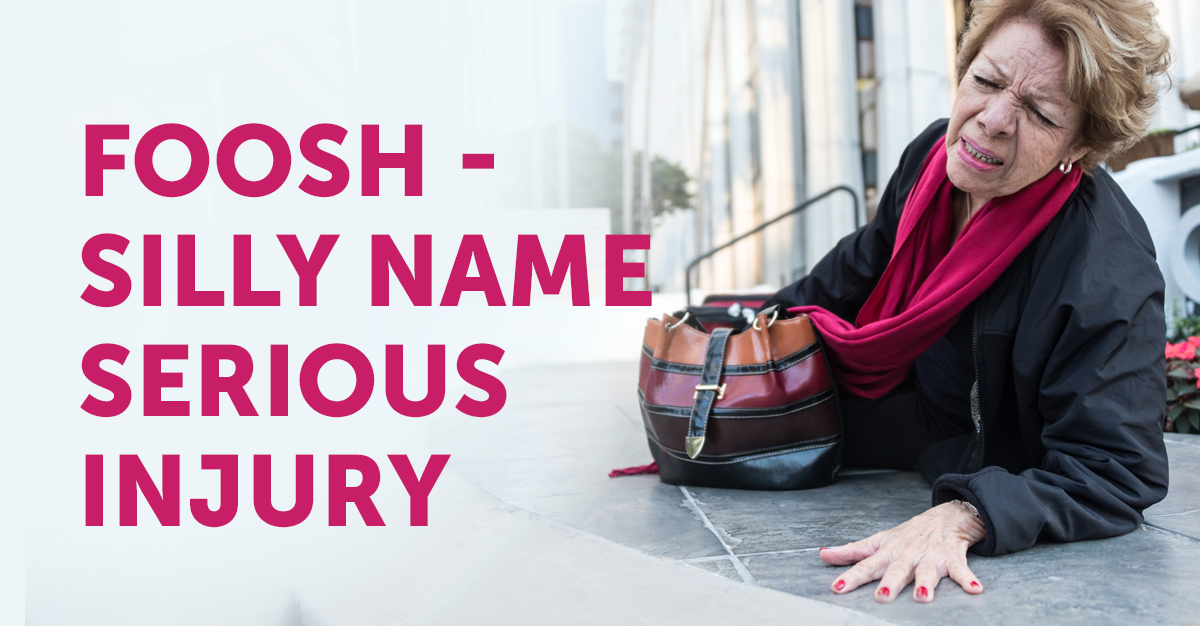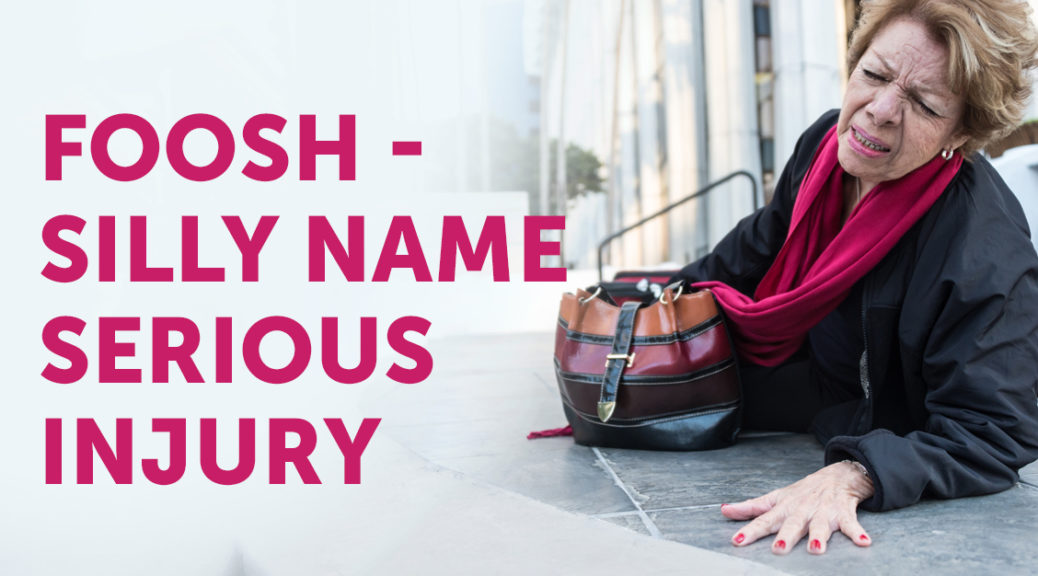
One of the most common mechanism of injury from falls is called a FOOSH (Fall on an Out Stretched Hand) injury. Don’t let the funny name fool you. A FOOSH injury is one of the most debilitating ways to injure your upper extremity and cause a significant loss of function. A Foosh occurs when a person is on their way down during a fall and tries to brace for impact using their hands. This is a natural response to falling and is difficult to try and prevent. The resulting impact of the hand and wrist on the ground can cause varying types of injuries from strains and sprains to fractures of the hand, wrist, elbow or shoulder.
What to look for if you experience a FOOSH Injury
1. Fractures: Typically, the fractures of the forearm from a FOOSH are the easiest to spot. They become swollen and bruised very rapidly and are associated with a lot of pain. Often times they produce a visible bulging of the skin of the forearm which can even protrude outside of the body. Fractures of the wrist and forearm will need to be evaluated and often times re-set and casted. Following casting the person must regain strength and range of motion through a guided exercise program before normal function can return. These injuries may take as long as 12 weeks to heal, but as many as 20 weeks for return to normalcy. This process can be expedited significantly by a referral to a well-trained physical therapist.
2. Sprains: Sprains from a FOOSH are much more difficult to spot. A sprain is a common injury to a ligament that normally holds one bone to another as a part of a joint. It most likely causes moderate to severe swelling, bruising, and pain. The pain may occur both by moving the joint yourself or having someone else move the joint while you are relaxed. During a sprain, a non-contractile piece of tissue becomes torn partially or completely. The result is a joint that is too lax to allow proper joint stability. This can cause problems for years following the initial injury. Think of the brake system on your bicycle. If the brake cable becomes elongated the brake does not function correctly until it is repaired. An evaluation by a physical therapist is necessary to diagnose and treat a sprain correctly and to prevent further injury to the injury site as well as allow for speedy recovery.
3. Strains: Strains are also difficult to spot following a FOOSH. A strain differs from a sprain in that it occurs as a tearing of the tendon instead of a ligament. This can present like a sprain with swelling and bruising, but will have a few different characteristics. Tendons attach to bone on one side and a muscle on the other. Tendons therefore hurt with both passive motion, but also with active motion. Strains of the wrist and hand can cause a significant loss in function with things like writing, typing, or even just holding an object in your hand. Without intervention, this can lead to progressively worsening problems like tendonitis and carpal tunnel syndrome which may need surgical intervention if not attended to quickly.
No matter your age or fitness level please use caution to avoid these types of debilitating injuries. If you do fall, it is important to consult your health care provider. During rehabilitation we can help you reduce pain, increase strength and regain function. Please feel free to call us for more information or to schedule an appointment.

